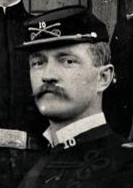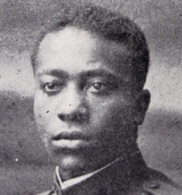|
|
|
|
February 2020
Phase 1 construction work continues at the site of the new National World War I Memorial in Washington, DC. The graphic construction fence covers, designed by Memorial architect Joseph Weishaar, have been installed, listing the key Memorial sponsors and organizations, along with information and photos. Passersby will be able to see through the panels to follow the ongoing construction work.
|
|
Our Forgotten Heroes:
Why don’t we talk about World War I?
"During the 'Great War', the United States of America lost over 116,000 of her troops in a span of only 19 months," writes Jessica Manfre on the We Are the Mighty web site. "It can be argued that without American's force beside the allies, the war wouldn't have ended in victory, but a stalemate. History has documented this impressive and vital piece of our story. So why don't we talk about it and those incredible heroes that turned the tide for an entire world in the name of democracy?" Click here to read the entire article about how "America failed its heroes by avoiding that chapter in its history."
Foundations & Legacy:
General John J. Pershing

To the fresh-faced and naive cadets at the University of Nebraska, he was “The Loot.” Some 25 years later, he was “The General” to battle-hardened officers of the American Expeditionary Force (AEF) at the end of World War I. Writing in The Officer Review magazine, Kevin Upton explores how John J. Pershing's experiences on the university campus both shaped and presaged his success on the battlefield in World War I, and his enduring influence on military organizations a century later. Click here to read the entire thoughtful article.
|
Lt. Col. Joseph H. Ward:
Doctor, surgeon, soldier

Leon Bates "came across Lt. Col. Joseph H. Ward’s name while doing research before returning to college, and came to appreciate his legacy while doing additional dissertation research." Writing in American Legion magazine, Bates notes that while digging further, "I discovered he was a medical trailblazer and early American Legion member whose achievements – decades before the civil-rights movement – have been largely forgotten." Click here to read the entire article, and find out how "this first-generation freedman became a successful physician, surgeon, entrepreneur, Army officer, hospital administrator, civic leader, and prominent member and commander of American Legion Post 107 in Indianapolis."
|

One of the most overlooked and neglected stories of African-Americans struggling for their inalienable rights was embodied by the 2,369 Black men who volunteered for training in the two Black Officers Training Camps at Ft. Des Moines, Iowa from June to November, 1917. Hal Chase, professor of African American studies at Des Moines Area Community College, takes up the story of how two of the 2,000 men who trained at Ft. Des Moines and "perceived themselves as the vanguard of their race that would forge a new future" went on to become leaders in the Civil Rights movement. Click here to read Chase's entire article.
|
|
|
|
|

Submitted by: Johnette Brooks {GA WWI African American Historian}
John Brother Cade was born around 1894. John Brother Cade served in World War 1 with the United States Army. The enlistment was in 1917 and the service was completed in 1917.
Story of Service
2nd Lt. John Brother Cade, 1894 – 1970, Elberton, GA
Southern University Library Namesake
| Historian | Author | Educator
By Johnette Brooks
John Brother Cade (aka John B.) was born on 19 October 1894 in Elberton, GA. He was the second child of William Richard and Sara Francis (Bradford) Cade. His siblings are his elder brother Luther (also a WWI Private); William Jr.; Dora J.; Luthura and Leola. He attended St. Paul’s CME Church grade school. In 1915, he graduated from Knox Institute and Industrial School in Athens, GA. He was an early member of the C.M.E. or Colored Methodist Church.
Shortly after entering college, John became one of the first to volunteer for the new WWI Officers School in 1917. On 12 June, he was plowing his daddy’s field during the summer college break when he received the notice of his appointment shortly after 8AM. After refusing to pay double the bus fare to a negro man in Elberton with a car, he took the Greyhound bus and arrived too late to take the 3:40PM, non-stop train the Army provided to Iowa. So, he boarded the Dixie Flyer the next day and immediately saw faces he recognized. He first saw (future 1 Lt.) Pierce M. Thompson, the Albany Normal and Industrial School principal; then William Robinson, an Albany teacher; John J. James, a mail carrier from Thomasville.
|
|
|
|
|